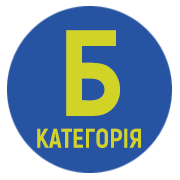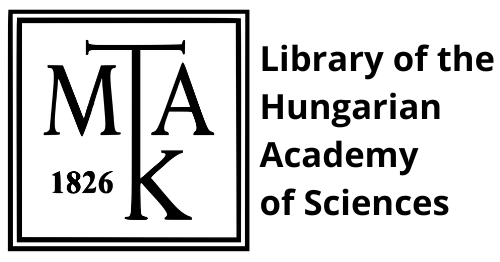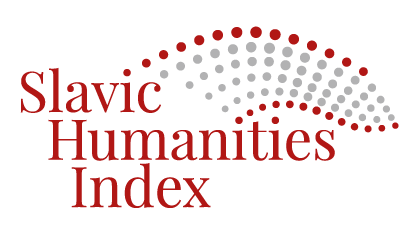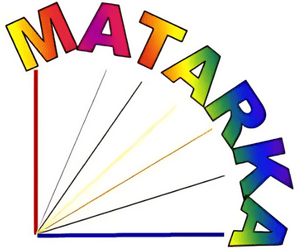Реалізація та вплив мовної політики: приклад киргизьких студентів університетів
DOI:
https://doi.org/10.58423/2786-6726/2023-1-44-75Ключові слова:
відкрита і прихована мовна політика, вплив мовної політики на національну ідентичність, висхідний і низхідний аспекти, лінгвістична поведінка, політика на макро- і мікрорівніАнотація
Мовна політика має вирішальне значення для культурної та політичної структури будь-якого суспільства, оскільки вона формує спосіб спілкування, взаємодії та ідентифікації індивідів і груп. Мовна політика має важливі наслідки для націєтворення та формування національної ідентичності, також може суттєво впливати на почуття приналежності студентів університетів. Відкрита та інклюзивна мовна політика може надати студентам можливість розвивати свої мовні навички та культурні компетенції, розширюючи академічні та професійні можливості. Прихована і неявна політика може створювати бар'єри для взаємодії між різними мовними (етнолінгвістичними) групами, що призводить до соціальної фрагментації, виключення та дискримінації. Відкрита мовна політика – це та, що відкрито визнається і впроваджується, прихована політика – це та, що є більш витонченою і може бути частково або повністю прихованою. Відкрита мовна політика, яка підтримує єдину національну мову, може об'єднати різні групи всередині нації. Однак така політика також може призвести до придушення мовного та культурного розмаїття всередині нації, що потенційно підриває культурне багатство суспільства. Прихована мовна політика також може мати значний вплив на ідентичність та національну єдність. Наприклад, мовна політика, яка не визнається відкрито, може призвести до плутанини або недовіри між різними мовними групами. Така політика може посилити дисбаланс влади між мовними групами, увічнюючи існуючу нерівність.
Беручи до уваги ці концепції, це дослідження мало на меті дати відповіді на наступні питання:
- Яка мовна політика була реалізована в Киргизстані?
- Як ця політика вплинула на студентів університетів? Для відповіді на перше питання була необхідна інформація про мовну політику, що реалізується в Киргизстані, для чого було вивчено закони, банкноти, назви газет і каталоги дисертацій. Для відповіді на друге питання необхідно було зібрати дані про те, як мовна політика вплинула на студентів. Крім того, глибинні інтерв'ю з експертами з мовної політики допомогли прояснити обидва питання.
Зібрану інформацію було проаналізовано за допомогою текстового аналізу та статистичних методів. Аналіз даних показав, що в Киргизстані реалізуються різні моделі мовної політики, включаючи багатомовність, двомовність і одномовність. Для просування цих моделей використовувалися відкриті, приховані та нечіткі приклади мовної політики. Ці моделі та методи сформували сегреговані спільноти, мовну дискримінацію та різні мовні ідентичності в межах одних і тих самих етнічних груп.
Посилання
Abdirazakova, G. (2014). Kyrgyzstan: Gender Analysis for GIZ Programme Mineral Resources for Development. https://gender-works.giz.de
Agadjanian, V., & Nedoluzhko, L. (2022). Imperial Legacies, Nation Building, and Geopolitics: Ethno-Regional Divides and the Russian Language in Central Asia. Ethnic and Racial Studies, 45(10), 1846-1872.
Akiyama, T. (2015). Why Was Russian Direct Rule over Kyrgyz Nomads Dependent on Tribal Chieftains “Manap s”? Cahiers Du Monde Russe, 625-649.
Barshai, A. (2021). Jews to Kyrgyzstan: From A to Z [Евреи Кыргызстану: От А до Я]. New Literature of Kyrgyzstan.
Bekmurzaev, N. (2020). Language Policies of the Central Asian States. IWPR.
Brody, A. (2019). Kyrgyz Republic Country Gender Assessment. Manila, Philippines: Asian Development Bank.
Chen, S. (1999). Research Methods in Language and Education. In N. Hornberger, D. Corson, & P. Corson (Eds.), Encyclopedia of Language and Education (Vol. 8). Springer Science & Business Media.
Civico, M. (2021). Language Policy and Planning: A Discussion on the Complexity of Language Matters and the Role of Computational Methods. SN Social Sciences(1), 22 pages.
Csernicskó, I., & Beregszászi, A. (2019). Different states, same practices: visual construction of language policy on banknotes in the territory of present-day Transcarpathia. Language Policy 18/2: 269–293. https://doi.org/10.1007/s10993-018-9485-3
Csernicskó, I., & Fedinec, C. (2016). Four Language Laws of Ukraine. international journal on minority and group rights, 560-582.
Darden, A. (2013). Resisting Occupation. Mass Schooling and the Creation of Durable National Loyalties. Cambridge University Press.
Das, A. (2011). Soviet Language Policy vis-à-vis Minority Languages: The Road to Disintegration. Indian Journal of Applied Linguistics, 37(2), 35-55.
Ehlert, M. (2008). Multilingualism and Language Practice of Minority Language Background Youths: A Case Study of the Ethnic Korean Youths in China. Canada: Simon Fraser University.
Garrett, P. (2010). Attitudes to Language. Cambridge University Press.
Grin, F. (1992). Towards a Threshold Theory of Minority Language Survival. Kyklos, 45(1), 69-97.
Grosjean, F. (1984). Life with Two Languages: An Introduction to Bilingualism. Harvard.
Horn, E. (2008). Multiple Regression: Options for dealing with outliers. https://oak.ucc.nau.edu/rh232/courses/EPS625/Handouts/Regression/Multiple Regression - Handout.pdf
Horner, K., & Weber, J. (2015). Multilingual Education and the Politics of Language in Luxembourg. In Past, Present and Future of a Language Border: Germanic-Romance Encounters in the Low Countries (pp. 233-254). De Gruyter Mouton.
Hult, F., & Johnson, D. (2015). Introduction: The Practice of Language Policy Research. In F. Hult, & D. Johnson (Eds.), Research Methods in Language Policy and Planning: A Practical Guide. Blackwell.
Huskey, E. (1995). The politics of language in Kyrgyzstan. Nationalities Papers, 23(3), 549-572.
Ingram, E. (1980). Great Britain's Great Game: An Introduction. The International History Review, 2(2), 160-171.
Ishemkulov, T. (2021, 9 26). "We tried to please Moscow". (B. Orunbekov, Interviewer) Radio Azattyk.
Jantzen, G. (2009). In the Remote Turkestan [В далеком Туркестане]. Bielefeld, Germany.
Johansson, L. (2010). Turkic Language Contacts. In The Handbook of Language Contact. Blackwell.
Johnson, D. (2013). Language Policy. New York: Palgrave McMillan.
Kokaisl, P. (2013). Do The Kyrgyz in Kyrgyzstan and abroad share the same culture? [Кыргызы в Кыргызстане и за рубежом - одна культура одного народа?]. Journal of the University of Poznań, 1-37.
Korth, B. (2005). Language Attitudes towards Kyrgyz and Russian: Discourse, Education and Policy in Post-Soviet Kyrgyzstan. Peter Lang.
Kroskrity, P. (2010). Regimes of Language: Ideologies, Polities, and Identities. Oxford: James Currey.
Kwak, S., & Kim, J. (2017). Central Limit Theorem: The Cornerstone of Modern Statistics. Korean Journal of Anesthesiology, 144-156.
LaDousa, C., Davis, C., & Choksi, N. (2022). Postcolonial Language Ideologies: Indian Students Reflect on Mother Tongue and English. Journal of Linguistic Anthropology.
Landau, J., & Keller-Heinkelle, B. (2012). Language Politics in Contemporary Central Asia: National and Ethnic Identity and the Soviet Legacy. London and New York: I.B. Tauris.
Levine, S. (1995, August 31). Bishkek Journal After Karl Marx a 1000-Year-Old Superman. New York Times.
Lin, A. (2015). Researcher Positionality. In F. Hult, & D. Johnson (Eds.), Research Methods in Language Policy and Planning: A Practical Guide (pp. 21-31). Blackwell.
Mambetaliev, A. (2013). Footprints of Christ on the Silk Road. Bishkek: Janyzak Print.
Mambetaliev, A. (2018). Saint Jesus on the Silk Road [Азрети Исанын Жибек жолундагы изи]. Bishkek: Kirland Publishing House.
Mambetaliev, A. (2019). Barriers to and Strategies for Sustainable Relationships on Multilingual Campuses. Sustainable Multilingualism, 14(1), 196-206.
Mambetaliev, A. (2021). A Reflection on the Language and Culture on the Margins. International Journal of Applied Linguistics, 158-168.
Mambetaliev, A. (2023). Language Policies, Attitudes, and Beliefs in Kyrgyzstan. Veszprém: University of Pannonia.
Martínez-Rivas, I., & Lasagabaster, D. (2022). An Analysis of Primary and Secondary Education Students' Attitudes towards English and Galician. In E. Charamba (Ed.), Handbook of Research on Teaching in Multicultural and Multilingual Contexts (p. 19). University of the Witwatersrand, South Africa.
McDermott, A. (2017). The Linguistic Landscape of Post-Soviet Bishkek. University of North Carolina.
McFadden, D. (1979). Quantitative Methods for Analyzing Travel Behavior on Individuals: Some Recent Developments. In D. Hensher, & P. Peter Stopher (Eds.), Behavioral Travel Modelling (p. 872 pages). Routledge.
Ministry of Culture. (2020, November 13). Kyrgyz Jarany [Кыргыз жараны]. https://minculture.gov.kg
Ministry of Labor. (2022, July 22). Ethnic Kyrgyz are in the focus of the government. https://mlsp.gov.kg
Nahir, M. (1998). Micro Language Planning and the Revival of Hebrew: A Schematic Framework. Language in Society, 27, 335-357.
Ornstein, J. (1959). Soviet Language Policy: Theory and Practice. The Slavic and East European Journal, 3(1), 1-24.
Paksoy, H. (1991). "Basmachi": Turkistan National Liberation movement 1916-1930s. Modern Encyclopedia of religions in Russia and Soviet Union, 4, 5-20.
Rice, J. (1995). Mathematical Statistics and Data Analysis (2 ed.). Belmont, USA: Wadsworth Publishers.
Ricento, T. (2000). Introduction. In T. Ricento (Ed.), Ideology, Politics and Language Policies: Focus on English. John Benjamins.
Savva, M., & Nygaard, L. (2021). The ‘Peripheral’ Student in Academia: An Analysis. In M. Savva, & L. Nygaard (Eds.), Becoming a Scholar Cross-Cultural Reflections on Identity and Agency in an Education Doctorate (pp. 154-171). UK: UCL Press.
Schiffman, H. (1996). Linguistic Culture and Language Policy. London: Routledge.
Schiffman, H. (2002). Language Policy in the Former Soviet Union. University of Pennsylvania.
Schiffman, H. (n.d.). Language Policy Theory: Types of Linguistic Minority Rights. https://www.sas.upenn.edu/~haroldfs/540/theory/lgpolthr.html
Siebetcheu, R. (2022). Language Attitudes of Cameroonian Immigrants Towards Italian Dialects. In F. Goglia, & M. Wolny (Eds.), Italo-Romance Dialects in the Linguistic Repertoires of Immigrants in Italy. Palgrave Studies in Minority Languages and Communities (pp. 147-167). Palgrave Macmillan, Cham.
Sinor, D. (2021, October 14). Kyrgyzstan. https://britannica.com/place/Kyrgyzstan
Smagulova, J. (2008). Language Policies of Kazakhization and Their Influence on Language Attitudes. The International Journal of Bilingual Education and Bilingualism, 11(3-4), 440-475. http://dx.doi.org/10.1080/13670050802148798
Spolsky, B. (2004). Language Policy. Key Terms in Sociolinguistics. Cambridge: Cambridge University Press.
Spolsky, B. (2019). A Modified and Enriched Theory of Language Policy (and Management). Language Policy, 18, 323-338.
Starkweather, J., & Moske, A. (2011, August 1). Multinomial Logistic Regression. https://it.unt.edu/sites/default/files/mlr_jds_aug2011.pdf
Stavans, A., & Jessner-Schmid, U. (2022). Multilingualism is not Bilingualism + 1: An Introduction. In A. Stavans, & U. Jessner-Schmid (Eds.), The Cambridge Handbook of Childhood Multilingualism. Cambridge University Press.
Tarbox, L. (2016). Language and Foreign Policy: The Kyrgyz Experience. University of South Carolina.
Tollefson, J. (1991). Planning Language, Planning Inequality: Language Policy in the Community. New York: Longman.
Tsung, L. (2014). Language Power and Hierarchy. Multilingual Education in China. Bloomsbury Academic.
Tulum, A., & Zubalov, D. (2022). Impact of Language Ideologies on Language Practices in Pridnestrovie. Journal of Siberian Federal University. Humanities & Social Sciences, 15(11), 1552-1572.
UCLA. (2022). Introduction to SAS. UCLA: Statistical Consulting Group. https://stats.oarc.ucla.edu/sas/modules/introduction-to-the-features-of-sas/
Vasi Múzeumi Arcképcsarnok. (2022). http://muzeumbarat.hu/eletr.php?elod_id=26
Downloads
Опубліковано
Як цитувати
Номер
Розділ
Ліцензія
Автори зберігають авторські права та надають журналу право першої публікації. Водночас робота ліцензується за умовами ліцензії Creative Commons Attribution 4.0 International License (CC BY 4.0), що дозволяє іншим поширювати матеріал за умови належного посилання на автор(ів) та первинну публікацію в цьому журналі.

















